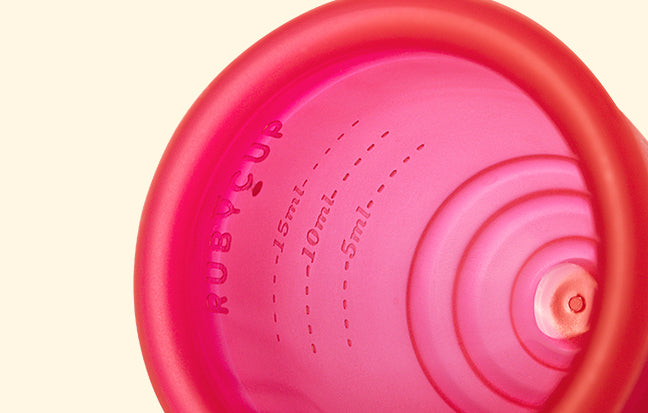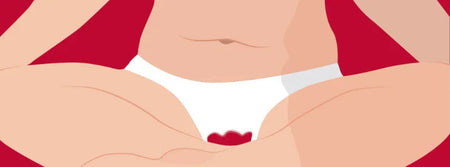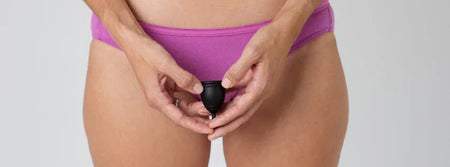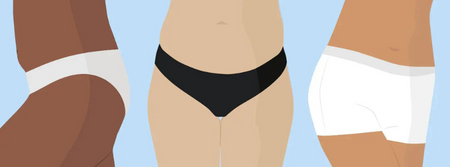It is important to educate ourselves on the materials we use in our everyday lives, and medical grade silicone is found in more places than you might think. So let’s deep-dive into the material used in everything from medical equipment to cosmetics tools, from reusable sandwich bags to cooking utensils, and from computers and other electronic devices to menstrual cups.
Even though we stumble upon silicone all the time, and in many eco-friendly products too, many people are not sure whether silicone is healthy both for the human body and for the environment in a broader sense. It’s also a material which is sometimes confused with plastic.
There are silicones out there of varying quality, but when it comes to medical grade silicone, these two materials are miles apart. Medical grade silicone does not create immunological responses in the human body, which means that it is so-called bio-compatible and safe to use both on the skin and inside of the body.
In this article, you’ll find out what silicone is made of, what the term ‘medical’ in medical grade silicone covers, the features that make the material genius for many uses, and much more. In short, you’ll find out everything you’d ever want to know about medical grade silicone.
|
Wanna jump right over to the Ruby Cup which is made of 100% medical grade silicone? Healthier for your body than other menstrual product choices. Get your Ruby Cup now. |
What is medical grade silicone made of?
Broken down to its smallest constituents, silicone is made of silicon dioxide (silicon and oxygen) with added hydrogen and extra oxygen atoms, and potentially carbon. Being made up in big parts of silicone dioxide, we also now know where silicone has gotten its name.
Silicon dioxide is a mineral found in earth’s sand, soil, granite, rock and concrete. It’s the most abundant mineral we have on earth - it actually makes up more than a full quarter of our planet’s crust. It has been used throughout centuries, amongst other uses for the production of glass, and in later times also in more refined forms such as in silicone that was invented in the 1930’s.
Medical grade silicone is produced in a manner that is highly chemically stable. This ensures that the material becomes non-reactive to its surroundings, and this is what makes the material safe for use in and on the human body. In order for a silicone to be termed ‘medical’, or ‘medical grade’, it must live up to these high and specific production standards.
The contract between the human body and medical grade silicone is in its essence: “I don’t react to you, and you don’t react to me”. That’s why the material is hypoallergenic and thereby suitable in medical settings.

Features of the versatile material
Medical grade silicone is a material with a long durability in both dry and humid environments. On top of this, it is strong while at the same time being able to appear flexible and soft.
But, more importantly, it is non-reactive to its environment and thereby biocompatible in the sense that it can touch any part of your body without releasing any particles. These are the reasons why it is the preferred material for big parts of the medical industry, where human health is of utmost importance.
Here’s a list of all what the material can and does:
- Flexible
- Biocompatible (does not create immunological responses in the human body, i.e. it is safe and non-toxic/hypoallergenic to the human body)
- Water-resistant
- Temperature-resistant
- Capable of withstanding shock/vibrations
- Inert/non-reactive
- Highly versatile
- Sterilizable
- Lasting
Silicone comes in various forms, from liquid to rubber-like, but to a higher degree than most forms of rubber, it can be soft and firm at the same time. This, and all the reasons above, is why medical grade silicone is the ideal material for a menstrual cup, that needs to be healthy, comfortable and lasting both for your health and for the health of the planet. The inherent non-reactiveness of medical grade silicone makes it both water-resistant, temperature-resistant and much more.

Is silicone plastic? If not, what is the difference between silicone and plastic?
As mentioned in the beginning of this article, some people confuse silicone with plastic, most likely because of the similarities in structure and looks between the two. But silicone is not plastic. Silicone and plastic are both polymers, i.e. similar units chemically bound together into a strong molecular structure.
Starting from what the two materials are made of, most plastics contain oil or petroleum. This is a problem when the products start to deteriorate as these substances are sent back out into the environment, oftentimes through toxic and almost invisible microplastics that we can end up eating or breathing in unknowingly, or taking in when drinking water. The same is true for the toxic phthalates that are often added in the production phase of plastic in order to make the material both more lasting and softer.

Silicon dioxide, the main constituent of silicone, is much more abundant than oil and petroleum. Furthermore, it does not release toxins at any point - also not at the point of deterioration. When medical grade silicone is broken down, it comes into the forms of water vapour, silicon and carbon dioxide, which all can enter back into our atmosphere without polluting it as such. Also, the deterioration process of silicone goes much slower than for plastic. By the time an item of plastic will have changed color or become damaged in any way, silicone will still stay in stable shape.
Truthfully, silicone, and also medical grade silicone are also not materials that can be defined as neither ‘natural’ nor ‘organic’, but medical grade silicone beats plastic on all parameters both from a human health and an environmental perspective. As a rule of thumb, go for even more natural materials whenever possible, and medical grade silicone whenever you need a durable material with plastic-like or rubber-like qualities
How to know the quality of a given type of silicone
Silicone comes in various qualities, and it is the highest quality format of it, medical grade silicone, you can trust, as lower-quality silicones can for sure be questionable. That’s also why the categories to distinguish one type of silicone from another even exist in the first place, and why trusted regulatory bodies are overseeing the production of the different kinds of silicone and providing quality stamps of approval for the most premium types.
The ‘medical’ part of medical grade silicone is the quality stamp that it lives up to ISO standards, which are (luckily for your health) pretty rigorous. ISO, the International Organization for Standardization, monitors that products are safe to use. Our Ruby Cup is made of medical grade silicone which is tested and compliant with the ISO 10993 standard. This is your guarantee that Ruby Cup is safe to use for your body.
If you want to make your own test of any silicone material you’d have at hand, try to stretch it out a bit and mold it around as you find suitable. What you’ll then look for is that the material easily pops back into its original shape and that it does not in any way change its color. If any silicone product turns white when stretched only slightly, you will know that you have a product of lesser quality at hand that contains fillers. (Note: There is a limit to how much you can stretch a medical grade silicone product without it turning white, so remember to stretch it only within reason.)
Also pay attention to the smell of the product at hand. That ‘plastic-y’ smell that we all know even though it is hard to define? Your medical grade silicone product shouldn’t smell chemical.

Why is medical grade silicone the ideal material for menstrual cups?
What we are experts on at Ruby Cup, is menstrual cups. And this is a field, where material matters. Because, just think of it for a second: Which materials do you allow inside of your body? The skin in your vagina is delicate and thin much like the gums in your mouth. This is the case as both these areas consist of mucous membranes which are basically a thin layer of skin covered in mucous.
Many brands of tampons and pads contain plastic, dioxins and bleaching additives that may enter your bloodstream through the mucous membranes. Menstrual cups contain none of these ingredients and do not interfere with the delicate balance of your vaginal flora.
Every body is different, and there is no one size fits all when it comes to the best choice of period products. At best, there is a one size fits most, and from our experience of working on perfecting the Ruby Cup throughout more than 10 years, we dare to claim that we have achieved that. Ruby Cup has become Goldilocks’ choice of menstrual cup. For most users, it is not too hard, not too soft. Not too long, not too short. Not too big, not too small. But just exactly right. Find out more about your ideal menstrual cup size.

The Ruby Cup is made of medical grade silicone, which is both extremely durable and also biocompatible and thereby safe to use in and on the human body. Furthermore, the Ruby Cup has proven to change lives for the better - these are reasons why we call Ruby Cup the period cup that impacts lives.
|
Want to know that you handle your period with a material that is healthy for you and the planet? Choose Ruby Cup. For every Ruby Cup purchased, we donate another one to a person without access to safe menstrual products. Get your Ruby Cup now. |
FAQs
What is liquid silicone rubber?
Liquid silicone rubber (LSR), also sometimes referred to as medical grade liquid silicone, is the base of medical grade silicone. In this more liquid form (when the material is worked with and before it is molded into its preferred final shape), it is injected with hydrogen, oxygen and/or carbon in order to get into its lasting shape as medical grade rubber.
What is the difference between medical grade silicone and food grade silicone?
The main difference between medical grade LSR and food grade LSR is that medical grade silicone is tested for biocompatibility - whereas food grade is not or doesn’t need to be. Medical grade silicone is the more lasting of the two, and also more expensive to produce of the two, as it is very important that it remains stable and does not shrink or become brittle over time.
What is silica or silicon dioxide?
Silica and silicon dioxide are two names for the same thing. It is a very common mineral which has the chemical formula SiO₂ (literally: silicon and oxygen) and makes up more than 25% of the earth’s crust as it constitutes the primary parts of earth’s rock, sand, concrete, granite, and soil. In other words, silicon dioxide is the most abundant natural resource we have on our planet. Traditionally, we see it manufactured into glass throughout centuries, and in more recent times also into silicone that got its name from the mineral itself. Silica comes in the three crystalline varieties quartz, tridymite and cristobalite of which quartz is the one we have most of on earth and therefore also the most known and used type.
Is medical grade silicone the best material for a menstrual cup?
Yes, yes, yes! Medical grade silicone is the safest, healthiest and most durable material for a menstrual cup. It does not interact with your body, unlike a number of other materials (e.g. rubber or cheaper copies of silicone) that would potentially send toxins into your body through the very thin mucous membranes inside of your vagina. Also, it is very gentle for your body compared to disposable period products that contain additives that might affect the delicate vaginal flora of your body, potentially causing dryness or itching.
How do I clean medical grade silicone?
Silicone is easy to sterilize. For disinfecting any item made of medical grade silicone, you give it a good warm bath into boiling water and leave it there for a few minutes. This will remove bacteria on the surface of the material, and do not worry about the heat, as the medical grade silicone can withstand very high temperatures. You can clean your menstrual cup or any other small medical grade constituent in our Ruby Sterilizer directly in the oven, microwave, or simply by pouring boiling water over it.
Is silicone supposed to turn white when stretched?
No, medical grade silicone should not turn white when stretched. Actually, testing the flexibility and stretching the material without it turning white proves the quality of the material. If any silicone product does turn white when stretched, you will know that you have a product of lesser quality at hand that contains fillers. (When stretched within reason, that is. Any silicone product can turn white when stretched enough.)
Is medical grade silicone toxic?
No, medical grade silicone is not toxic. In fact, the exact opposite is the case. The material is biocompatible, which means non-toxic and hypoallergenic to the human body that does not respond immunologically to it. That is what is so genius about the material and why it is used for so many products where it is touching the human body either directly or indirectly.
Is medical grade silicone organic?
There is no such thing as organic medical grade silicone. The process through which silicone is derived from sand is not ‘natural’ to a degree that any medical grade silicone can rightfully be labelled organic.
Written By Valentina Carrara
Valentina has been part of the Ruby Cup team for many years and is our go-to expert on menstrual cups. With plenty of knowledge and experience, she’s passionate about helping people understand how menstrual cups work and why they’re a great option. If you have any questions or doubts, she’s always happy to help: Just drop her a message at hello@rubycup.com.








